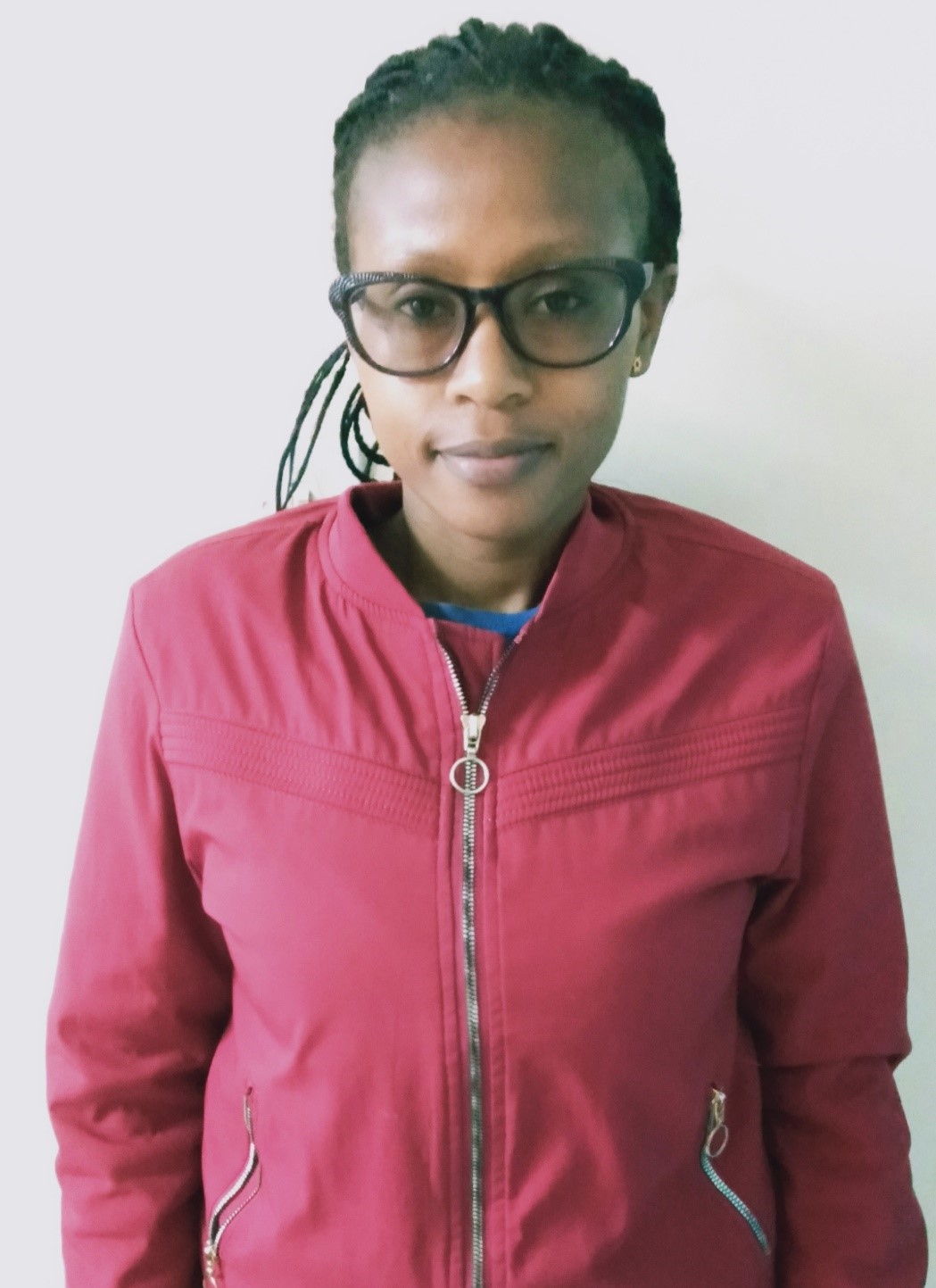
Nicoleta Wairimu is a Plant breeder with research experience in Sorghum, tomatoes and Watermelon. She has participated in genomics projects including the development novel sources for Striga resistance in sorghum from wild relatives of sorghum as well as establishing the genetic diversity of these wild accessions.
Nicoleta earned her bachelor’s degree in Biology (2015) from Masinde Muliro University of Science and Technology (Kakamega) and completed a Masters in Plant Breeding and biotechnology at the University of Nairobi (2022) in Nairobi, Kenya.
She is well acquainted in working within a group setting and also assuming leadership roles within a group. She prides herself in being a good listener and having the ability to focus on a task until it’s well executed. Her areas of expertise include Qualitative and quantitative genetics; Genetic mapping; Pre-breeding; Statistical genomics; Genotyping and marker development; Next-Generation Sequencing and data analysis.
Nicoleta’s vision is to transform lives through agricultural research for sustainable food production, poverty eradication and environment conservation
.
Abstract
Sorghum is the second most important cereal crop in Kenya with about 144000 tonnes being produced annually. Striga hermonthica a major cause of sorghum yield loss especially in Western and Nyanza regions of the country. Farmers have traditionally managed Striga using cultural methods but the most `effective and practical solution is to develop Striga resistant varieties. A field trial consisting of Sixty-four sorghum genotypes comprising of wild relatives, landraces, improved varieties and F4 progenies were evaluated in a sickplot and in a potted trial at KALRO- Alupe during 2019 rainy season. Experimental design was a square lattice design with three replications. Genotyping using Diversity Array Technology markers to assess their diversity was done. In another experiment, Marker Assisted Selection (MAS) was used to transfer Striga resistance QTLs into popular varieties Gadam and Kari-Mtama-1. N13, Framida, SRN39 and Hakika were used in the crossing block to obtain F1 and BC1F1 generations. Backcrosses were genotyped using DArT markers to trace heterozygous alleles and to confirm successful backcrossing. The (ASNPC) selection criteria was used to identify resistant genotypes in the trials.
The overall best performing genotypes in terms of Striga resistance and yield in both trials were Macia, SRN39,GBK 045827 and GBK 016085. SNPs generated from DArT-sequencing grouped the genotypes into three major clusters, with all resistant checks grouping in the same cluster except N13. The results from this analysis revealed successful backcrosses for the crosses involving Gadam and donors N13, Framida and SRN39. The study showed that Striga resistance and Striga tolerance alleles are available within the local wild relatives, landraces and improved sorghum genotypes and there is need tap into this potential to improve sorghum production
Important Links
https://orcid.org/0000-0001-6153-0556
https://scholar.google.com/citations?view_op=list_works&hl=en&user=48gFb90AAAAJ
Research Supervisors
Prof. Eliud Kahiu Ngugi (University of Nairobi)
Dr. Lydia Wamalwa (University of Nairobi)
Dr. Damaris Achieng’ Odeny (ICRISAT)
